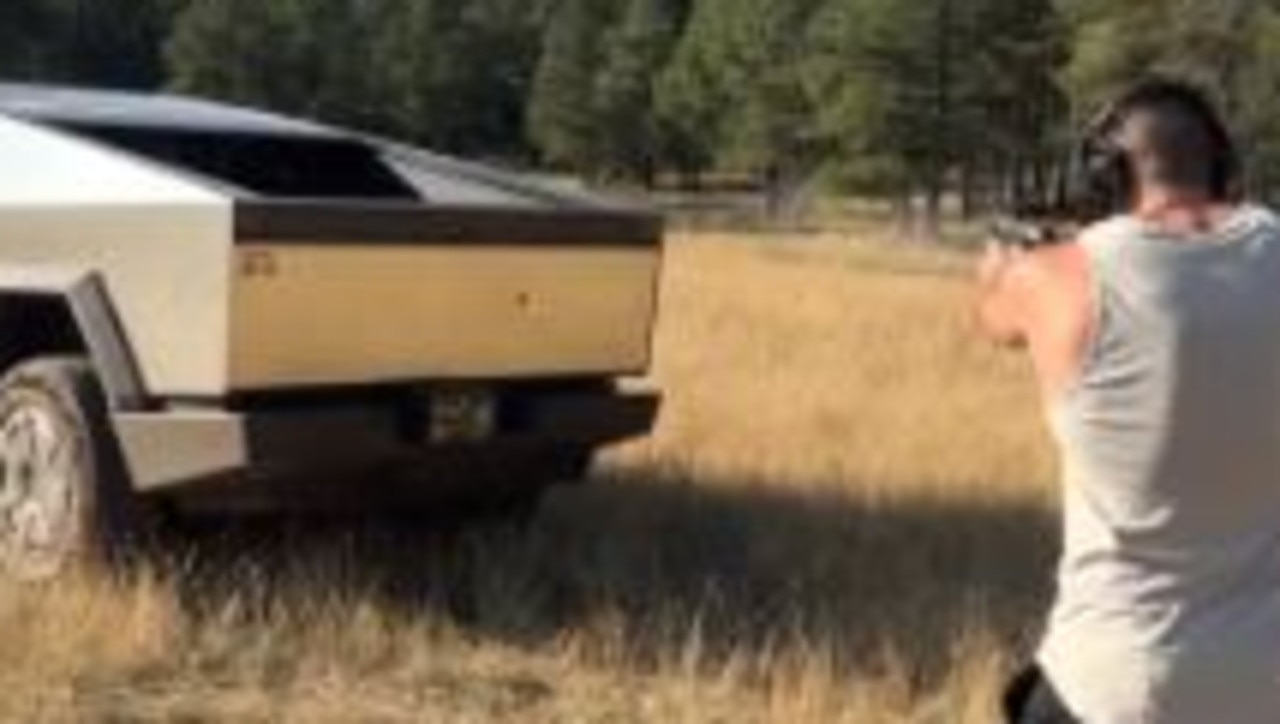Toyota’s hydrogen-powered HiAce van debuts
The world’s biggest carmaker has been slow to act on battery-powered electric vehicles but its latest vehicle could leapfrog the competition.
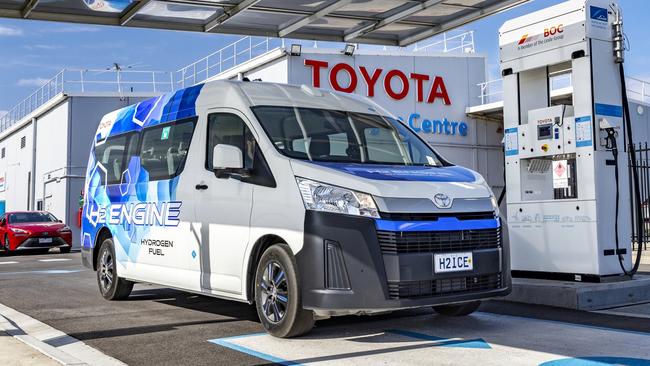
HiTech
Don't miss out on the headlines from HiTech. Followed categories will be added to My News.
Toyota has unveiled a HiAce passenger van that has been converted to run purely on hydrogen.
The vehicle could pave the way for four-wheel drives such as the LandCruiser to eventually power through the outback with a near-zero carbon footprint, with an internal combustion engine under the bonnet.
The HiAce Hydrogen Prototype has been in Australia undergoing local development and will embark on an evaluation program with potential fleet customers before potentially finding its way into Toyota showrooms.
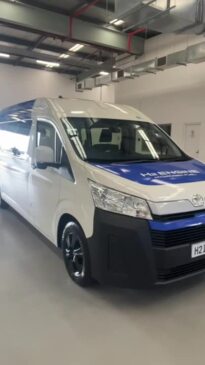
Rather than using a fuel-cell to power an electric motor, the hydrogen HiAce uses a V6 twin-turbo engine with revised fuel injectors to help it run on hydrogen, which burns with no carbon.
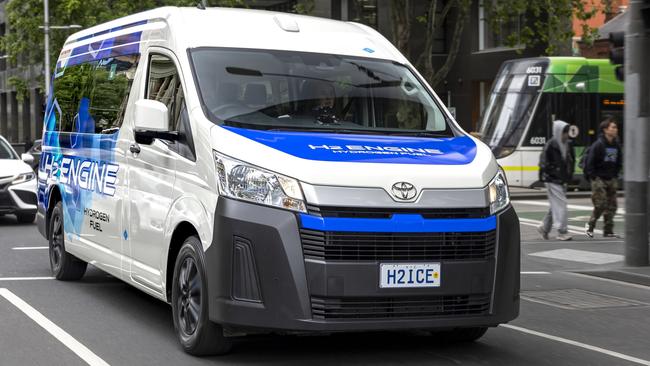
There are compromises and inefficiencies with an internal combustion engine running on hydrogen, though, as most of the energy created is lost in heat rather than being used to move the car. Burning hydrogen also emits poisonous nitrogen oxides (NOx).
The prototype only makes 120kW of power – less than a Corolla – and can drive less than 200km between top-ups, issues the company says would be addressed if the hydrogen HiAce were to progress to production.
Toyota says the biggest advantage of adapting hydrogen tech to an existing engine is the relative affordability compared with the tech required for battery electric vehicles (BEVs).
While Toyota is years behind on EVs, it led the way on popularising hybrid technology, which is much more affordable.
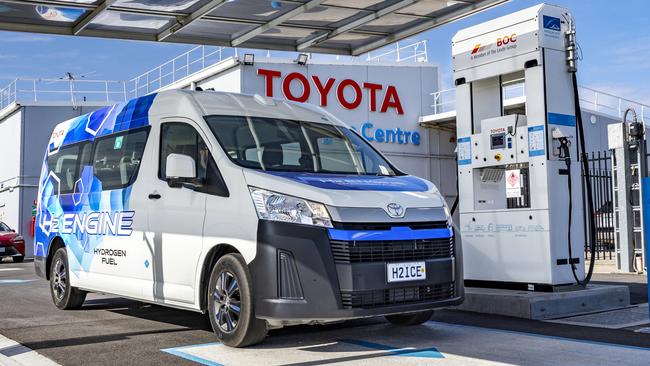
The “H2ICE” tech is all part of Toyota’s multi-pathway plan to offer different clean-air technologies – including BEVs – each with their pros and cons.
“BEVs aren’t for everyone right now,” says Sean Hanley, Toyota Australia vice president of sales and marketing.
“They’re not the only way to decarbonisation. Australians need choice. Toyota is offering choice.”
Car makers such as Mazda and BMW have previously evaluated hydrogen in a petrol engine but have since abandoned the idea, in part due to the inefficiencies compared with a BEV.
Tesla has long been against hydrogen propulsion, too, and the Chinese brands that are leading the way on electric development are largely investing in new battery technology that could have EVs charging in as little as 10 minutes.

But Toyota firmly believes hydrogen is relevant and says it can play a role in accounting for fluctuations in the supply of renewables such as solar and wind.
Toyota’s hydrogen factory president Mitsumasa Yamagata describes the hydrogen HiAce as “the first commercial demonstration of a hydrogen internal combustion engine”.
Yamagata says the technology can be used on other models, particularly larger vehicles, and he says the company has started evaluating using the technology on vehicles such as the LandCruiser.
“There are possibilities to introduce this to big vehicles including LandCruiser,” says Yamagata.
“We have started that study using other vehicles.”
Originally published as Toyota’s hydrogen-powered HiAce van debuts


